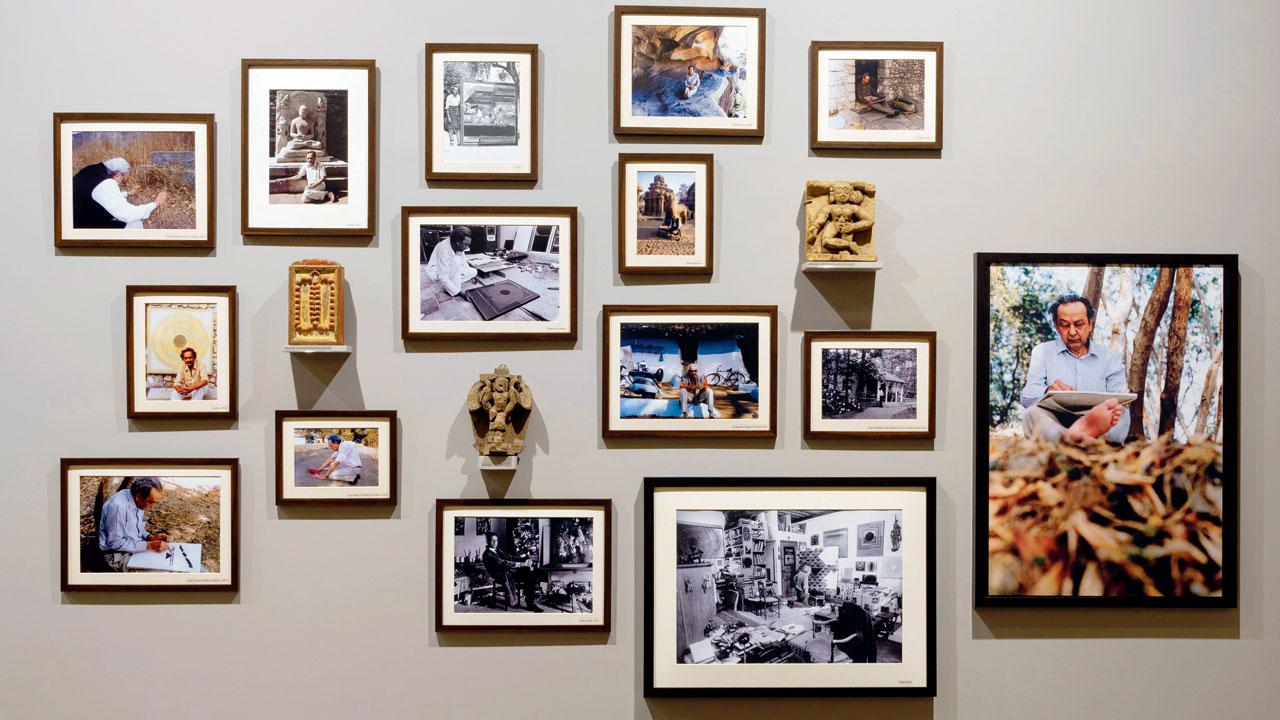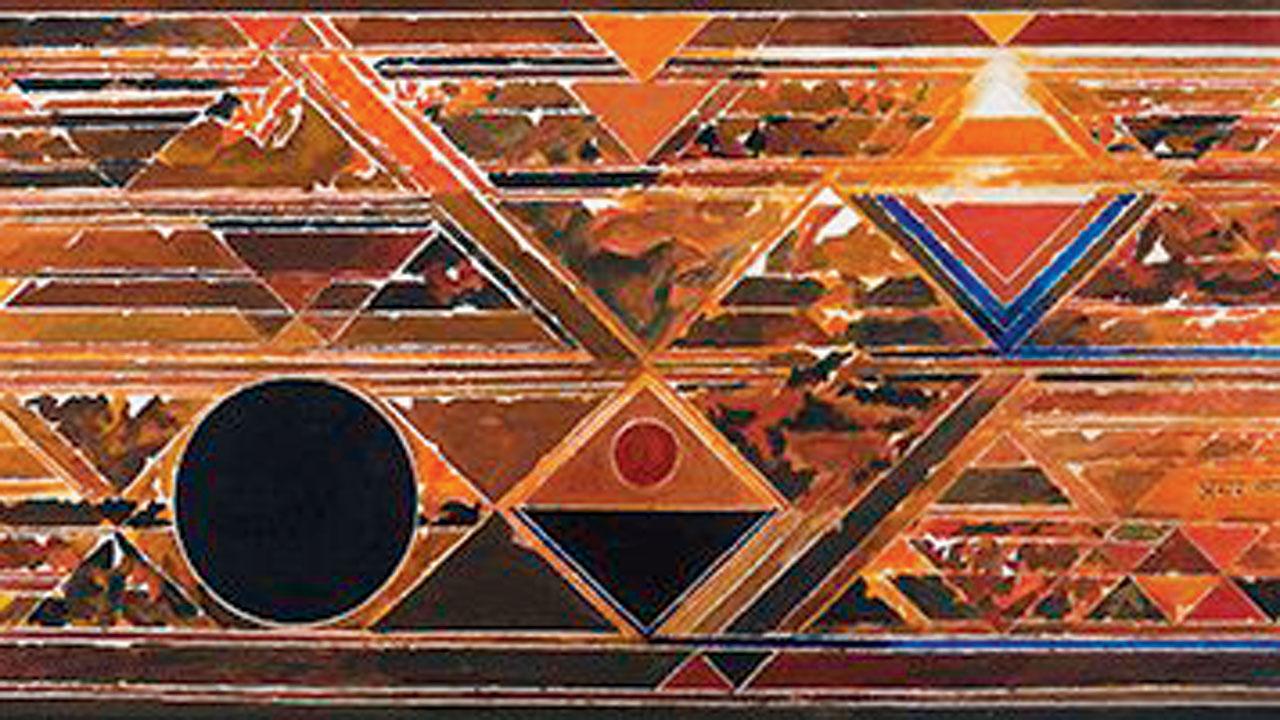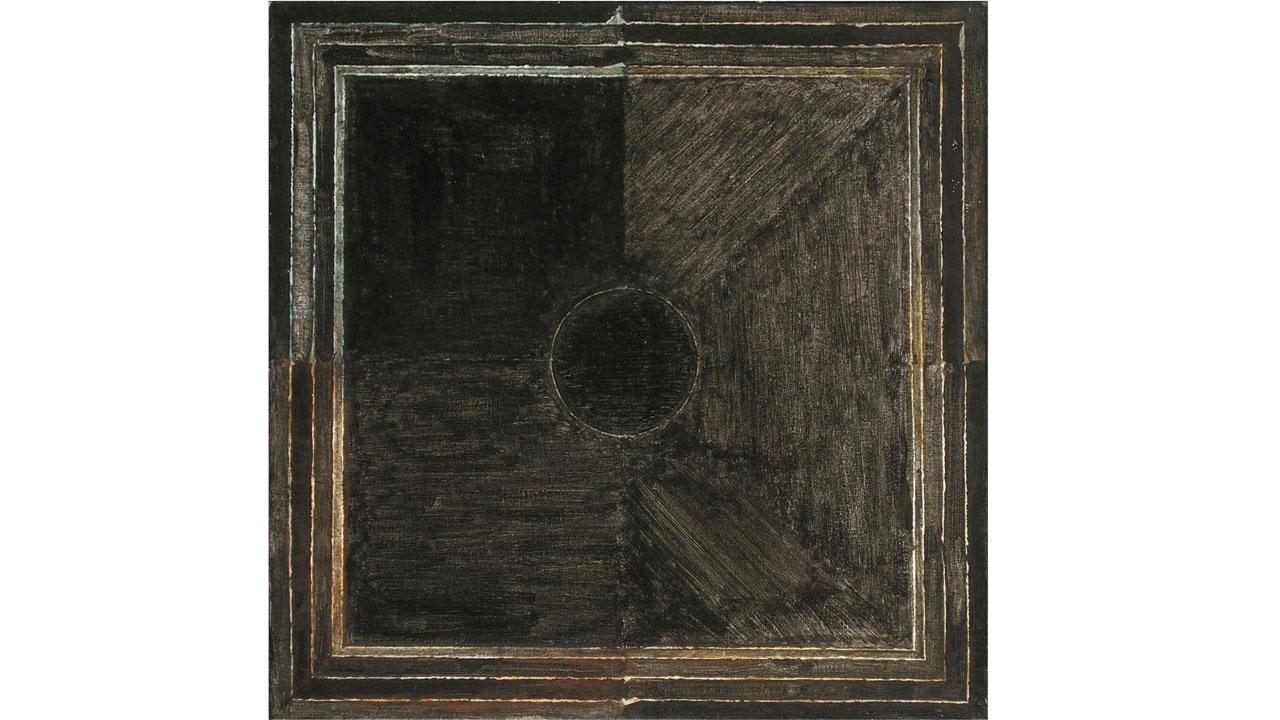CSMVS celebrates a centenary with SH Raza, in a uncover that traces his artistic and personal tour as a landscape artist

SH Raza photographed by Jehangir Nicholson
Over a march of his artistic journey, Sayed Haider Raza changed from description watercolour landscapes, experimentations with Western art movements when he was in Paris, and after to geometric condensation as he mostly returned to his homeland and sought to bond with a Indian timberland landscape. This year, his centenary coincides with that of Chhatrapati Shivaji Maharaj Vastu Sangrahalaya (CSMVS). To applaud his oeuvre, Jehangir Nicholson Art Foundation’s (JNAF) muster Zamin: Homelands traces his tour by his thought of belonging and practice of emigration clear in his work as a landscape and diaspora artist in office of a complicated Indian visible language.

SH Raza’s photographs, brushes and palette. Pics courtesy/Jehangir Nicholson Art Foundation, Mumbai
Curator of a show, Puja Vaish, tells us, “This muster traces Raza’s personal tour and explores his landscapes by a source of land and a places that hold definition for him in moulding his universe view; and his landscapes in tie with ideas of nature, amicable and informative environment, and nationhood — as a source of place, banishment and belonging.”

SH Raza, Amar Kantak, 2000. Pic/Sangita Jindal Collection
Most of a works showcased are from a 1960s to a ‘70s. The works are not displayed chronologically, instead their sequence brings out a inflection between a paintings from opposite periods, and so we can declare a change in a description of a same landscape. Vaish notes, “Raza was wakeful of his position as an Indian artist.” She explains that as a immature artist during a fork of India’s independence, he carried with him, as did his contemporaries, a wish and end of a new republic and a mobility it afforded. And this enclosed being during standard with tellurian art movements where these artists felt a need to conclude Indian art.

Genesis 1996,acrylic on canvas
This was also a time when ideas that were strong in his after works were born. A repeated and iconic design in Raza’s epitome work is a bindu that is representational of several associations such as dark, light, seed, meditation, reverberation, a sun, universe and cosmos. Abstraction, a Western form, offering Raza a space to interpose in it Eastern philosophy, mysticism, and spirituality. Charged with ancient and dedicated concepts, his works emanate a form of energy. Vaish says, “Raza infused meanings and appetite into his landscape.” She continues that a artist approaches a landscape roughly as if it were a pilgrimage. Along with a practice of belonging and emigration imbibed in his work, a bindu — a pondering form — seems usually wise for a seeking artist.

SH Raza’s, 1971
The uncover includes 35 paintings in a multi-partnership between a museum, JNAF, Art Musings and The Raza Foundation. It also includes photographs of Raza, his letters, brushes and palette for a holistic perspective of a artist’s life of migration, a amicable realities of his time alongside his artistic journey.
Till: Jul 31
At: 10.15 am to 6 pm; Walkthrough on Jun 11 during 3 pm
At: Jehangir Nicholson Art Foundation, CSMVS, Mahatma Gandhi Road
Cost: Rs 100

